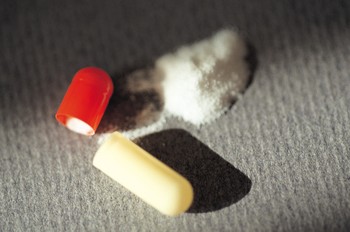 |
|
Progress seen in fight against counterfeit drugs
Updating its annual "Combating Counterfeit Drugs Report, the FDA revealed May 18 it is pursuing several initiatives to further protect the safety and integrity of the U.S. drug supply. Among the most effective tools in its arsenal, the agency noted, are more aggressive enforcement and investigation of counterfeiting violations, along with new efforts to collaborate more effectively with the private sector and with other government agencies. The two go hand in hand, the FDA noted. "More effective coordination with other state, federal and foreign law enforcement agencies and improved communication with drug manufacturers ... contributed in large part to the increase in investigations." In 2004, the FDA's Office of Criminal Investigations [OCI] launched 58 counterfeit drug investigations involving hundreds of thousands of fake dosage units. "These cases represent a dramatic increase from the previous year, when 30 such cases were initiated," the agency reported. "This increase is partially due to heightened vigilance and awareness by all parties in the drug distribution system as a result of the FDA's issuance of its original [counterfeiting] report in 2004." OCI Special Agents, warned Margaret O K. Glavin, the agency's associate commissioner for regulatory affairs, "are showing criminals that if you counterfeit drugs, the FDA will catch you." In its bid to close the holes in the U.S. pharmaceutical supply chain and seal out fake, ineffective and/or contaminated products, the FDA is pinning much of its effort on the development and implementation of "a standard electronic track-and-trace system using radio-frequency identification for widespread use in the drug distribution system." Over the past year, there has been tremendous progress in advancing RFID, the agency asserted. The FDA also is reporting "significant advancements ... in developing an electronic pedigree [chain of custody] for drug products. "FDA is optimistic that this progress will continue at a rapid pace and will achieve widespread use in the drug supply chain," added an agency spokesperson. These changes will make it more difficult for counterfeit drugs to enter the distribution system. Additionally, drug manufacturers are increasing their use of anti-counterfeiting technologies such as holograms, color-shifting inks and covert markings on drug, products and packaging," the FDA stated in its report. "Also, several states are beginning to adopt stricter laws regarding the movement of drugs through the supply chain. Also helping stem the fake drug flow are government efforts to forge stronger ties with foreign law enforcement agencies and international organizations, as well as a new FDA consumer education program. Along those lines, the National Consumers League has developed and posted a Web site containing consumer information about counterfeit drugs, at fraud.org/fakedrugs. "We believe the United States' prescription drug supply is as safe as any in the world, and the FDA is committed to ensuring that this continues, said Randall Lutter, acting associate commissioner for policy and planning. |
Copyright 2025 Fstradio.com All rights reserved.
|

 ROCKVILLE, Md. -- The Food and Drug Administration is reporting "significant progress" in its long battle to stem the tide of counterfeit prescription drugs entering the U.S. supply chain. The agency credited increased criminal investigations, "heightened vigilance and awareness by all parties in the drug distribution system" and other factors for the gains.
ROCKVILLE, Md. -- The Food and Drug Administration is reporting "significant progress" in its long battle to stem the tide of counterfeit prescription drugs entering the U.S. supply chain. The agency credited increased criminal investigations, "heightened vigilance and awareness by all parties in the drug distribution system" and other factors for the gains.